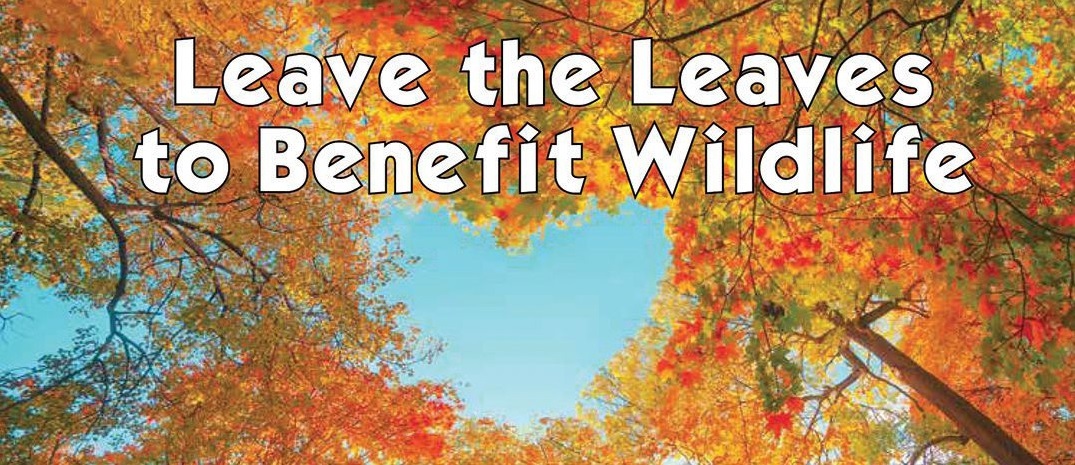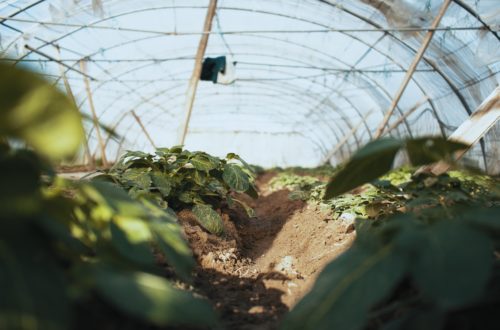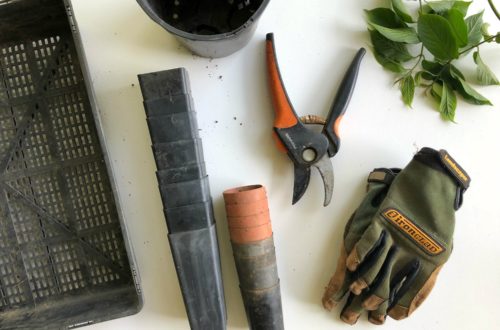It is fall again, and we have harvested all of our garden produce and are making sure our outside faucets are protected against winter’s freeze. The leaves are changing color and tumbling from the trees—and that means fall cleanup in the yard and garden.
For many people fall cleanup means cutting all the seed heads and stems off the flowers and raking up all of the leaves. A tidy garden and yard are what many people strive to achieve. Everything clipped back, leaves raked and removed, messy piles of branches put in the green bin for pick up. This tidiness may look nice to us, but it is not good for all of the small creatures that live in and around your property.
Out of sight often means out of mind for people, and fall is a time when you do not see the bees, butterflies, and other beneficial insects that were flitting around your flowers all summer. So, where do these insects go when they are not visiting your garden? Some do migrate—like the monarch butterfly, flying south to overwinter in trees in Mexico or along the California coast—but the vast majority spend their entire life in and around your property. Many of our native solitary bees have laid eggs and provisioned nests in soil or in standing dead trees or hollowed-out branches where the young are pupating. Bumblebee queens have found areas to overwinter under branches, in rock walls, and in other relatively dry, snug places.
Many species rely on fallen leaves for cover and to insulate them from the elements. Depending on the species, butterflies and moths spend the winter as eggs, caterpillars, pupae, or adults. As Justin Wheeler described in our first Leave the Leaves blog: Great spangled fritillary and wooly bear caterpillars tuck themselves into a pile of leaves for protection from cold weather and predators. Red-banded hairstreaks lay their eggs on fallen oak leaves, which become the first food of the caterpillars when they emerge. Luna moths and swallowtail butterflies disguise their cocoons and chrysalises as dried leaves, blending in with the “real” leaves. There are many such examples.
Beyond butterflies, bumblebees also rely on leaf litter for protection. At the end of summer, mated queen bumble bees burrow only an inch or two into the earth to hibernate for winter. An extra thick layer of leaves is welcome protection from the elements. There are so many animals that live in leaves: spiders, snails, worms, beetles, millipedes, mites, and more—that support the chipmunks, turtles, birds, and amphibians that rely on these insects for food.
When you think of what these animals need, it is best to visualize natural areas where they have evolved. Natural areas are not manicured, sticks and leaves are not “cleaned up” and removed, grasses grow long, seed heads are left for songbirds to feed on, and seeds can fall where they might germinate.
Now visualize your yard. Do you have any of the messiness of the local natural area? If not, you are likely not providing for all of the important animals that help pollinate your plants, provide pest control in your garden, and help build healthy soils.
Now you are likely asking—how can I possibly have a yard with the wildness of a natural area? For many people, there is no way that they are going to give over their entire yards just to nature. After all, most yards are designed for humans—not nature. That said, I believe you can provide both a great place to live, to entertain, and for kids to play and provide vital winter habitat for the bees, butterflies, birds, and other wildlife that also need homes.
My yard is a great example. If I had my way, it might look like the local natural area, but there are many considerations, and we have been quite successful in providing for our needs and those of wildlife. We maintain enough lawn for the kids to play and where we can set up our trampoline. We also need to consider neighborhood association rules. In addition, my wife likes a little sense of tidiness.
We leave our wildflowers to go to seed for the birds— it was amazing and fun to watch how many birds fed on my sunflower seeds this year—and let our vegetable garden bolt to provide resources for pollinators. We also allow some messiness. When I finally trim back bushes, I pile the branches in out-of-the-way places where they can provide shelter for overwintering bumblebees or butterflies. An added benefit is that we have had spotted towhees nest in these same branch piles.
When the leaves fall, we rake them but do not discard them. Instead, we pile them on our garden beds or in the corners of our yard where they might be used by the animals that need this shelter. In the spring, we either dig them into the garden beds or put them in the compost. I also often look at what is using these leaves. Spiders and pill bugs are common, as are predatory centipedes and beetles. Where the leaves are in contact with the soil, I often find great numbers of earthworms that help make better soil for my garden.
Leave the leaves does not mean ignoring them and leaving them where they fell. You can move them to places in your yard where they are out of the way, will not kill your turf, and will still help wildlife. A thin layer of leaves can actually help turf—but too much will kill the grass. Consider raking leaves into areas around trees, or use them as winter mulch for perennials or to cover garden beds. I have found in Oregon that a thick layer of leaves in my garden beds helps minimize weed problems early in the spring and can be a great soil amendment.
We also let our neighbors know what we are doing so that they know we are not just being lazy. The same neighbors see a variety of flowers throughout the season and an abundance of pollinators and birds visiting our yard. The messiness is just an extension of our wildlife gardening, and by making sure people know that wildlife need places to live year-round—especially when it is cold and grey outside—it does help them understand why we should all #leavetheleaves!
So next time you have fall cleanup chores in your yard, think about how you can have a yard for you, your family, and for all of the animals with which we share this planet.
Scott Hoffman Black is the Executive Director of the Xerces Society and an internationally renowned conservationist who has been at the forefront of the conservation movement for three decades. Scott’s work has led to the protection and restoration of habitat on millions of acres of rangelands, forests, and farmland as well as protection for many endangered species. He is the author of the best-selling Attracting Native Pollinators and Gardening for Butterflies and has written more than two hundred other publications including a recent chapter on climate change and insects.
For more information visit: https://xerces.org/






